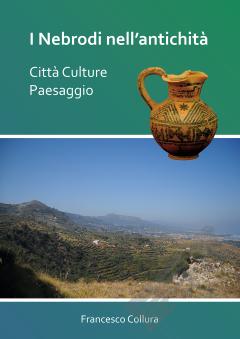I Nebrodi nell’antichità: Città Culture Paesaggio
The Nebrodi mountains run along the central-northern part of Sicily. It is an area characterised by high ground that rises abruptly from the Tyrrhenian coast, separated by narrow valleys crossed by creeks and a few flat areas. Human presence there is very old due to the abundance of natural resources (water, wood, fertile land) and a favourable climate. In classical times, many cities prospered here, usually on well-defended hilltops; the archaic indigenous settlements encountered Greek culture from the 6th century BC, but they can be defined as totally Hellenized only after the middle of the 4th century BC. The phase of greatest prosperity was the Hellenistic age, especially following the Roman conquest of Sicily. Important centres were, among others, Tyndaris, Halaesa, Kale Akte and Herbita. Their wealth derived from the great availability of natural resources and from direct or indirect trade with the rest of the island, the Italian peninsula and other areas of the Mediterranean, especially those overlooking the sea. The birth of many of these settlements often dates back to prehistory and the existence of some of them has continued until today. The physical characteristics of this mountainous part of Sicily, along with its remoteness from the main cities of antiquity, affected the forms of human occupation and the growth of an autonomous culture. The Nebrodi have long remained archeologically unexplored: research and excavations were few and concentrated mainly on certain sites (particularly Tyndaris and Halaesa). Therefore, the history of these districts is still almost unknown. This volume presents the author’s many years of research, hoping to increase the knowledge of many aspects of this part of the island: the meeting between indigenous and Greek cultures, their coexistence, the types of settlement and the organization of cities, the trade and the local productions.|I Monti Nebrodi occupano la parte centro-settentrionale della Sicilia. Si tratta di un’area caratterizzata da rilievi che si elevano repentinamente dalla costa tirrenica, separati da strette vallate percorse da torrenti e con poche aree pianeggianti. La frequentazione umana è antichissima e fu agevolata dalla ricchezza di risorse naturali (acqua, boschi, terreni fertili) e da un clima molto favorevole. In epoca classica qui prosperarono numerose città, sorte in genere su rilievi ben difendibili; gli insediamenti indigeni incontrarono la cultura greca a partire dal VI secolo a.C. ma si possono definire totalmente ellenizzati solo dopo la metà del IV secolo a.C. La fase di maggiore prosperità fu l’età ellenistica, soprattutto quella successiva alla conquista romana della Sicilia: centri importanti furono, tra gli altri, Tyndaris, Halaesa, Kalè Akté, Herbita, la cui ricchezza derivava dalla grande disponibilità di risorse naturali e dai commerci diretti o indiretti svolti con il resto dell’Isola e con la Penisola Italiana, ma anche con altre aree del Mediterraneo, soprattutto per quelli che si affacciavano sul mare. La nascita di molti di questi insediamenti risale di frequente alla preistoria e l’esistenza di alcuni di essi si è prolungata fino ad oggi. Le caratteristiche fisiche di questa parte montagnosa della Sicilia determinarono peculiari forme di occupazione e lo sviluppo di una cultura autonoma, anche a causa della sua perifericità rispetto ai principali centri dell’antichità. I Nebrodi sono rimasti a lungo archeologicamente inesplorati: pochi sono stati i saggi di scavo, concentrati principalmente su alcuni siti (soprattutto Tyndaris e Halaesa). Pertanto la storia di queste contrade è rimasta a lungo quasi sconosciuta. L’autore ha svolto ricerche finalizzate alla conoscenza di molti aspetti inediti di questa parte dell’isola: l’incontro tra cultura indigena e cultura greca, la loro coesistenza, i modi d’insediamento e la forma delle città, i commerci
{{comment.content}}








 京公网安备 11010802027623号
京公网安备 11010802027623号